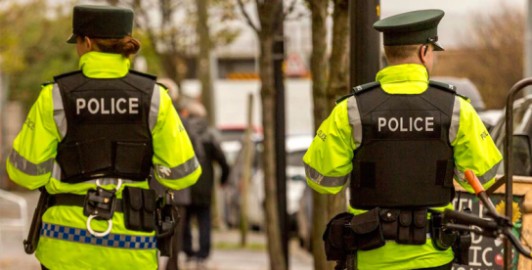Trauma experienced by victims of sexual violence can impact on their interactions with officers and the police investigation and greatly affect their evidence; it can be difficult and distressing for victims to remember and recall events in the detailed chronological format that the Criminal Justice System (CJS) requires. Police must be trauma-informed (TI) and embed this understanding into the provision of procedural justice for victims. Procedural justice entails giving voice to victims, treating them with respect and dignity, being trustworthy, and making balanced and clear decisions.
Trauma is a vital framework for understanding the effect of sexual violence. A popular starting definition comes from the American Psychological Association (APA): ‘an emotional response to a terrible event like an accident, rape, or natural disaster’.
Trauma responses will be different for each person and may change over time. Rape Crisis England and Wales explain that some victims may feel:
- angry/‘moody’
- ashamed/‘dirty’
- embarrassed/humiliated
- guilty/like they’re to blame
- unable to trust
- lonely/alone
- numb
- worthless
- hopeless
- stressed
- fatigued
- low/depressed/suicidal
- upset
- overwhelmed
- can’t cope
- ‘slow’ – mentally/physically
- groggy/foggy/‘spaced out’
- confused/unsure about what happened/what they’re feeling
- uninterested/scared/disgusted in sex/intimacy
Responses to sexual trauma are numerous and varied. Rape Crisis list the following psychological, physiological and behavioural responses:
- intrusive/unwanted thoughts/ feelings
- physical feelings, e.g. nausea/sweating/shaking
- aches/tension/pain
- self-harm/self-harm urges
- alcohol/drug misuse
- low self-esteem
- avoiding certain places/things that remind them of the traumatic event
- becoming withdrawn and isolated/not wanting to do things they used to enjoy
- feeling anxious/worried/‘on edge’/uneasy/panicked/scared. Feelings can be extreme, long-lasting, overwhelming (known as ‘hyperarousal’)
- flashbacks: vivid memories of a traumatic event, feels like they are happening now
- sleep problems: insomnia/nightmares where they might feel they are reliving sexual violence
- panic attacks: can be caused by anxiety. Common symptoms: having trouble breathing, feeling dizzy/light-headed/sick/weak/shaky
- dissociation: brain tries to detach from reality to cope with trauma. Might feel like daydreaming/‘out of body’ experience
Dissociation is a defence mechanism that can disrupt memory formation. Activation of a ‘fight or flight response’ to a perceived threat can also affect parts of the brain responsible for creating and retrieving memory. Victims may struggle with memory and event recall; it may be distressing to try to piece together the experience in detail and chronologically.
Trauma is complex and can push the nervous system beyond its ability to self-regulate, becoming stuck in an ‘on’ – or ready-to-react – position, leaving people overstimulated and unable to calm. This ‘autonomic response’ can mean sexual violence victims react strongly to everyday encounters and stimuli which might not be a threat or trigger to others. Police officers’ actions must be rooted in understanding that what ‘might seem small, like a throwaway comment or location of a meeting room – even a smell or a sound, is not necessarily small to someone with experience of trauma’ (Rape Crisis Scotland).
Autonomic responses are common following prolonged or chronic exposure to stress and harm. Books like The Body Keeps the Score (van der Kolk), Complex PTSD (Walker) and the YouTube channel The Crappy Childhood Fairy (Runkle) outline how chronic trauma exposure can create unique and lasting problems for people. As a police officer, you should be mindful of your own wellbeing. Guidance is available at The National Police Wellbeing Service | Oscar Kilo.
The APA once described trauma as a ‘terrible event’, but a more expansive definition identifies: 'an event, series of events, or set of circumstances that is experienced … as physically or emotionally harmful or life threatening and that has lasting adverse effects on the individual’s functioning and mental, physical, social, emotional, or spiritual well-being' (SAMHSA).
A chronic state of hyperarousal places a lot of stress on every system in the body. The Adverse Childhood Experiences Survey demonstrates a link between adverse experiences in childhood and adolescence and a person’s future health and relationship formation.
Social inequalities shape the level of exposure that different groups have to adverse experiences. Likewise, experiencing or witnessing interpersonal and institutional racism, harassment and discrimination can itself amount to ‘racial trauma’. A broader understanding of trauma is therefore needed, one which recognises ‘the contextual features that give rise to, maintain, and impact trauma-related responses’. Marginalised groups may suffer further from a lack of cultural and professional recognition of the traumas they experience.
Police officer understanding of the individual and contextual features of trauma makes for improved interactions with victims. It builds empathy and understanding that victims might also be dealing with other trauma, e.g. ‘intergenerational trauma’ from family history of the holocaust and/or slavery. Understanding the context also enables better recognition that policing has been a traumatising factor in the lives of many people, which may affect how victims of rape and serious sexual offences (RASSO) feel about and interact with police.
A broader understanding of trauma facilitates improved interrogation of rape myths. The credibility of people reporting RASSO and assisting in investigations is often assessed. Rape myths can influence police perceptions of what a ‘normal’ victim response to RASSO should look like. Officers might expect victims to appear visibly distressed and unable to continue with their everyday lives, or to be fearful of sexual encounters rather than perhaps continuing or increasing their sexual contact with others. This can result in a judgement as to whether people have ‘really’ experienced RASSO and be ‘deserving’ of officer time and empathy, based on misunderstandings about how sexual violence affects people. When adopting a TI approach, it is important that officers continually challenge the idea of what a ‘normal’ trauma response should look like.
It is important to recognise that the general category of ‘normal’ behaviour can reflect prejudices, such as sexist double standards, e.g. who is described as ‘bossy’ at work and who is ‘assertive’, and everyday behaviour ‘rules’ that neuro-diverse people may be shamed for not following. Improving police practice in response to RASSO requires active efforts to unlearn bias.
Not all sexual violence is experienced as a trauma and not all victims will present as traumatised. A calm and confident victim may or may not be traumatised. Policing must recognise and respond to human difference and diversity beyond the framework of trauma and TI work.
Moreover, RASSO can involve serious impacts and harms beyond trauma. Research shows that sexual violence can cause a huge sense of ‘social rupture’ in victims’ relationships and self-identities across their lifetimes; it can leave them feeling constantly unsafe in the world, limiting their sense of belonging, freedom and participation in public life. It is crucial that the police understand and address these outcomes wherever possible. A procedural justice approach is vital to ensure victims’ rights and interests are upheld, and experiences of citizenship are fostered. TI practice is only one way of promoting procedural justice for victims. Nonetheless, it is critical.









Rate and Review
Rate this article
Review this article
Log into OpenLearn to leave reviews and join in the conversation.
Article reviews